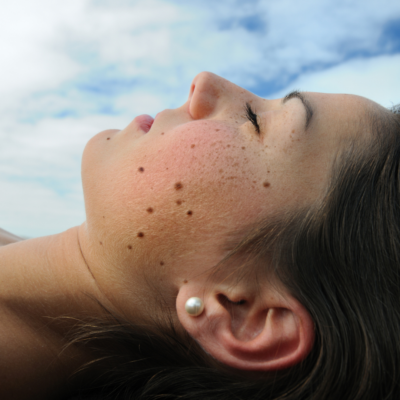How to Treat Acne Scars
Here at California Skin Institute we see many patients who are dealing with acne.* With over 20 practices throughout northern California and a team that includes some of the best dermatologists in the country, we’ve cultivated deep expertise with acne treatments that can address minor breakouts or treat full-blown cystic acne.* However, a big part of treating acne is helping the patient deal with the physical scars afterwards.* Although, these constant reminders of past breakouts can be quite frustrating, California Skin Institute providers are highly skilled at reducing the appearance of scars, even the difficult pitted scars with our options of acne scar treatments.*
Understanding Acne Scars
The key to understanding acne scar treatments is to first look at the types of scars that can occur. For example, some individuals will present with scars that manifest as skin discolorations, or hyperpigmentation. These can be caused by improper extraction at home (like popping pimples), or can develop during the skin’s natural healing process during prolonged breakouts.
Another type of acne scars creates depressions in the skin. These types of scars can appear in a variety of shapes and sizes, and are described with names like; rolling acne scars, ice pick scars, and box car acne scars, among others. These can vary significantly in size and can be especially difficult to treat with topical medications, because they can extend deep into the skin.*
Treating Acne Scars
California Skin Institute providers offer many options when it comes to treating acne scars, and will tailor solutions specifically for your needs.* This will typically depend on the size and depth of the scar, whether the primary issue is hyperpigmentation or skin depression, and whether you’re currently experiencing active breakouts.*
There are several main approaches to treating acne scars.* One approach is to remove the damaged skin cells, so that new, healthy skin can replace them.* Other, more advanced treatments can utilize specialized dermal fillers that can raise pitted scars.*
- Laser Skin Resurfacing: Laser skin resurfacing with Fraxel or a CO2 laser can be an effective solution for shallow scars, or those where hyperpigmentation is the biggest issue.* During this procedure, the damaged layers of skin cells are damaged through targeted laser beam application.* As the dead skin peels off over several weeks after treatment, new skin will take its place.* This procedure can be very effective for acne scars, and may be more suitable to individuals with extensive scarring, as some down time is involved with this treatment.*
- Photofacials: For acne scars that are less prominent, a laser photofacial treatment may be more appropriate.* Unlike laser skin resurfacing, a photofacial has virtually no down time, and works by targeting specific pigment within the skin.* Usually, several sessions are needed for best outcomes.*
- Acne Scar Subcision: For deeper scars, California Skin Institute providers can administer a minor surgical procedure that breaks up the scar tissue underneath the skin.* During this treatment, the area is numbed with a local anesthetic (like lidocaine) and a small needle is inserted under the scar.* The needle is then moved under the skin to break up the scar tissue and release the skin depression.* Several treatment sessions may be needed, and acne scar subcision is often combined with other treatments for stronger outcomes.*
- Chemical Peels: Another treatment for acne scars utilizes chemical peels.* California Skin Institute providers can use a variety of treatments; from strong TCA peels that require time off work, to Glycolic Peels, which are less severe but may require more treatment sessions.* With all chemical peels, however, the idea is to remove the damaged skin cells that are responsible for scar tissue.*
- Combination Treatments: For deep, pitted scars, your California Skin Institute provider may use a combination of treatments for an aesthetically-pleasing outcome.* For example, deep scars can be especially difficult to treat with laser skin resurfacing.* In such cases, a series of chemical peels or microdermabrasion treatments may be performed over several months in order to gradually decrease the depth of the scars.* Once the scar depth has been decreased, a laser skin resurfacing can then be utilized as a more aggressive treatment option.*
- Bellafill: In some instances, a dermal filler may be a better option for very deep and large scars.* In this case, your California Skin Institute provider may inject small amounts of Bellafill into the area to provide volume under the scar, thus smoothing the area.* This can be an effective long-term solution for some patients, as Bellafill is long-lasting; in some cases up to 5 years.*1
Acne scars can be a frustrating problem, and can take time to treat effectively, without further damaging the skin.* However, with the help of the experts at California Skin Institute, you can significantly diminish their appearance with a custom-tailored solution to your needs.*
To schedule your acne scar treatment consultation, contact a California Skin Institute practice near you, or simply fill out the Contact Form below!
*Individual results may vary and are not guaranteed.
References: 1. Gottfried Lemperle, et. al., ArteFill® Permanent Injectable for Soft Tissue Augmentation: I. Mechanism of Action and Injection Techniques., Aesthetic Plast Surg. 2010 Jun;34(3):264–72. 2. Bellafill® [Instructions for Use]. San Diego, CA: Suneva Medical, Inc.; 2015. 3. Jacob CI, Dover JS, Kaminer MS. Acne scarring: A classification system and review of treatment options. J Am Acad Dermatol; July 2001; 109-117.



 / 291 Reviews
/ 291 Reviews